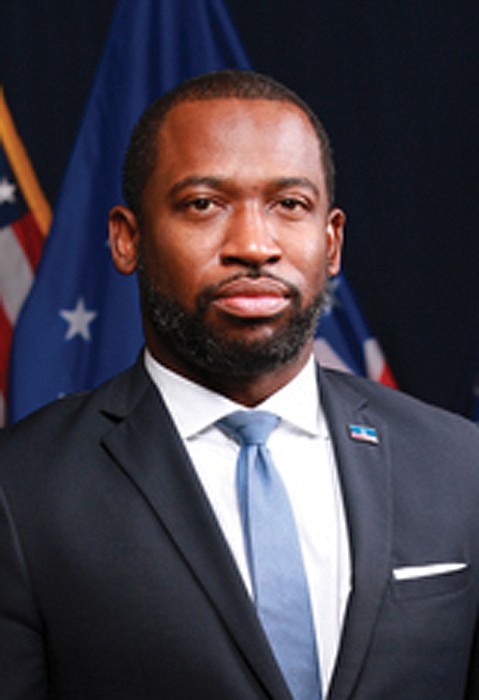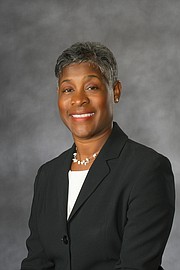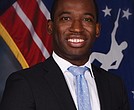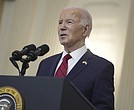Big mistake
Tear gas released on Lee statue protesters was in error
Jeremy M. Lazarus | 8/4/2022, 6 p.m.
Twenty-five minutes before an 8 p.m. curfew was to go into effect, Richmond Police officers began firing tear gas and other noxious chemical agents to disperse hundreds of demonstrators who had gathered around the now removed Robert E. Lee statue in the city’s West End.
More than two years later, the mystery appears to be solved as to why dozens of officers undertook what appeared to be an illegal action on June 1, 2020 — violating people’s constitutional right to assemble peaceably and stoking the local fires of protest over the Minneapolis Police murder of George Floyd.
In a seven-page report released July 29, Richmond’s top prosecutor, Colette W. McEachin, confirmed what Mayor Levar M. Stoney and then-Police Chief William C. Smith tried to tell an angry crowd of people who marched to City Hall the next day to protest the gassing — that the release of chemical agents at the Lee statue before the curfew took effect was a mistake.
She issued that conclusion in announcing that none of the officers who deployed chemical agents would face criminal charges, though the action has led to multiple civil suits for damages.
Mrs. McEachin determined that the officers acted after receiving a lawful, though mistaken order from Chief Smith, who resigned a few days later.
According to the report, Chief Smith erroneously believed he was authorizing officers to deploy the chemical agents against a crowd that trying to pull down the Stuart statue then located on Monument Avenue 500 feet east of the Lee statue.
Overall, the report paints a picture of a confused and overwhelmed police command that was ill-prepared for this test of the department’s ability to maintain order amid the huge uproar over police brutality and racial injustice.
The report indicated that Chief Smith did not assign or dispatch a ranking officer, such as a lieutenant, captain or major, to take charge of the response at either statue as the protests began that night, leaving sergeants and patrol officers in charge.
Chief Smith also never established a clear line of communication from either scene, the report indicated, but instead allowed himself and his staff to be bombarded with reports over multiple channels from individual officers.
One glaring error, according to the report, involved how officers were dispatched from the staging area, located north and west of the statues, to deal with the upheaval that night.
The dozens of officers who responded around 7:30 p.m. mostly came east along Monument Avenue, arriving at the Lee statue first and stopping there, instead of moving past to reinforce the nine officers at the Stuart statue who had issued a mayday call for help dealing with their crowd of 400 people. Essentially, those arriving officers had no direction as to where to go and made the decision themselves after seeing the crowd at the Lee statue, the report stated.
The most egregious error, the report found, was the failure of Chief Smith and his staff to demand location information from the multiple officers who were delivering reports or to provide location information themselves, particularly when it came to authorizing the use of chemical agents.
“This lack of clarity contributed to the overall confusion and chaos,” the report stated, and led Chief Smith to authorize he first use of chemical agents at the wrong place, the Lee statue.
Flying overhead, an officer around 7:29 p.m. reported and transmitted video to Chief Smith of people climbing onto the Stuart statue and trying to hacksaw the legs, Ms. McEachin’s reported stated, noting that no similar aerial surveillance was over the Lee statue.
The officer overhead shortly thereafter notified the chief that people were trying to put ropes around the statue to pull it down.
“Based on the information transmitted by Air 3 about what protesters were doing at the Stuart monument, an RPD sergeant requested permission from command to disperse the crowd with chemical agents,” according to the report.
According to the report, Chief Smith, who had just seen the video of the attack on the Stuart statue, authorized the sergeant to use the chemical agents at 7:31 p.m., but “neither the sergeant nor RPD command ever specified at which monument the chemical agents was authorized to be deployed. “Officers began deploying the agents at the Lee statue four minutes later, the report noted.
“The evidence is clear that RPD command believed that permission was being granted to ‘use gas’ at the Stuart monument,” according to the report. “It is also clear that the sergeant requesting permission believed that permission was being granted to ‘use gas’ at the Lee monument.”
Those who deployed the chemical agents did so “only after receiving a lawful order and authorization from command – that is, from the chief of police.
“There is no evidence that any officer violated the chain of command and deployed chemical agents prior to receiving Chief Smith’s permission to do so,” she wrote in exonerating the officers.









